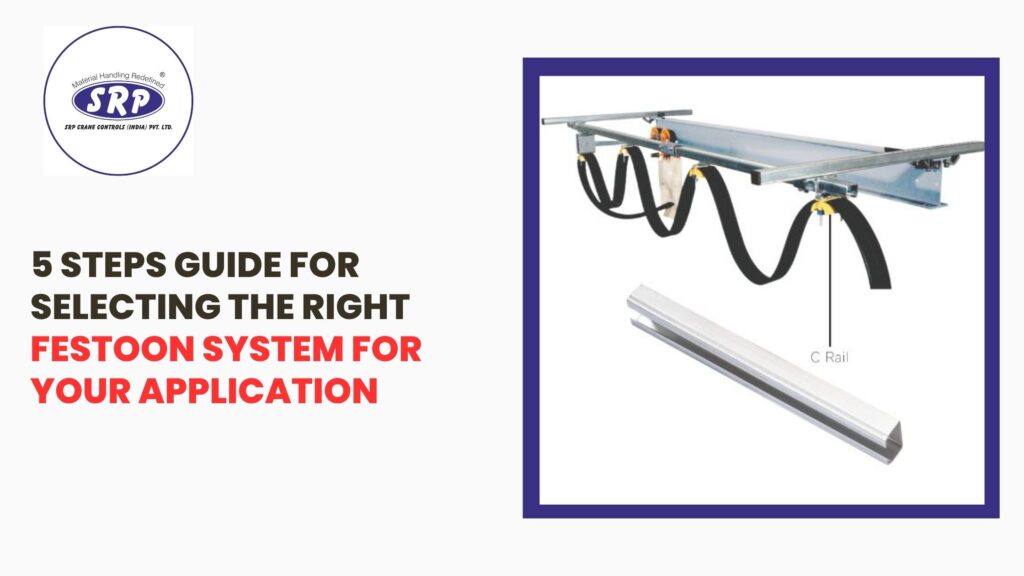
In the high-stakes world of industrial automation and material handling, every component counts—but few are as quietly influential as the festoon system. Imagine this: a single malfunction in your festoon setup can bring a multi-million-dollar crane to a grinding halt, erasing hours of productivity and putting your team at risk. That’s why selecting the right festoon system isn’t just a technical decision; it’s a business-critical one. For starter entrepreneurs looking to make their mark, mastering this choice is a shortcut to operational excellence and competitive advantage.
Understanding Festoon Systems: The Foundation of Efficient Crane Operations
A festoon system is far more than a bundle of cables trailing behind a moving crane. It’s the lifeline that delivers power and data to overhead cranes, hoists, and automated machinery, enabling them to operate smoothly over long distances and in challenging environments. The festoon system’s evolution from rudimentary cable reels to today’s sophisticated, modular setups is a story of relentless innovation. Early systems were prone to tangling, wear, and failure—problems that modern engineering has largely solved.
At its core, a festoon system consists of trolleys that guide the cables along a track, the cables themselves, the track that serves as the system’s backbone, power supply units, and hangers that keep everything in place. Together, these components ensure continuous, reliable transmission of power and signals, even as the crane moves back and forth across a facility. “The teamwork of these parts guarantees steady and trustworthy festoon system performance,” as noted by industry experts.
For those eager to see how festoon systems fit into the broader safety ecosystem, our blog post “Safety Enhancements in Next-Gen Crane Controls” offers a deep dive into the technologies that are transforming modern material handling.
Step 1: Assessing Your Application Requirements and Environmental Conditions
Selecting the right festoon system starts with a clear-eyed assessment of your specific needs. Are you operating in a dusty warehouse, a humid port, or a high-traffic manufacturing plant? Each environment presents unique challenges—dust, moisture, temperature extremes, and even explosive atmospheres can all influence your choice.
Consider the example of a port crane: here, the festoon system must withstand saltwater corrosion, UV exposure, and heavy loads. In contrast, an indoor automated warehouse might prioritize compactness and ease of installation. “When choosing the right cable for festoon systems, the key factors to consider are environment and load requirements,” advises a leading industry resource. “For outdoor or heavy-duty applications, cables should be resistant to UV radiation, chemicals, and temperature variations.”
Don’t overlook regulatory requirements. If your facility operates in potentially explosive atmospheres, look for systems certified to ATEX or IECEx standards. These certifications ensure that your festoon system is designed for safety in hazardous environments, reducing the risk of catastrophic failure and downtime.
Step 2: Selecting the Appropriate Cable Type and Arrangement for Durability and Performance
Once you’ve mapped out your environmental and operational needs, it’s time to choose the right cable. Festoon cables come in two main flavors: flat and round. Flat cables are ideal for high-flex applications where space is limited, such as in compact crane systems or conveyor setups. They allow for smooth movement and are less prone to tangling, making them a favorite in dynamic environments.
Round cables, on the other hand, offer superior protection against wear in settings with frequent bending or rotation. They’re often the go-to choice for outdoor or heavy-duty applications, where robustness is paramount. “Flat cables save space. They’re great for systems where cables need to stay compact and tidy along the track. Round cables offer bendability. They’re better for rough settings where strength and flexibility matter most,” explains a trusted industry guide.
The cable’s capacity should also match your current load and voltage requirements. Under-specifying your cable can lead to overheating, premature failure, and even safety hazards. Over-specifying, while safer, can unnecessarily inflate your costs. Striking the right balance is key.
For practical tips on maintaining your crane’s electrical systems, check out “10 Essential Crane Safety Tips to Prevent Accidents and Ensure Safe Operations.”
Step 3: Choosing the Right Trolley and Track System to Match Load and Movement Needs
With your cable selected, the next critical decision is the trolley and track system. Festoon trolleys come in various materials—steel, plastic, and composite—each offering distinct advantages. Steel trolleys are robust and durable, ideal for heavy-duty applications. Plastic and composite trolleys are lighter and reduce friction, making them perfect for high-speed operations where every second counts.
The track itself is equally important. Options range from C tracks, which are lightweight and easy to install in tight spaces, to I beam tracks, which are built for rugged industrial environments and heavy loads. Wire rope tracks are prized for their adaptability and ability to span long distances, making them ideal for outdoor use in ports and shipyards. “The C track system shines in places where space is tight but solid performance is still a must. In rugged industrial environments, the I beam festoon system stands out. Its strong build can handle heavier loads and tougher conditions,” notes a leading manufacturer.
For applications requiring lightning-fast movement and precision, consider an angel bar festoon system. These systems are engineered for low friction and smooth action, making them a favorite in automated setups and robotic systems.
Step 4: Calculating System Dimensions and Component Specifications for Optimal Functionality
Now comes the math. Calculating the right dimensions for your festoon system is essential for ensuring smooth operation and longevity. The length of your cable, the number of trolleys, and the spacing between hangers all play a role in how well your system performs.
“The longer the travel distance of the runway or bridge, the longer that collection of cables will be and the more space you’ll need to store them,” explains an industry expert. “Additionally, in a low headroom area, a festoon system can be problematic if the loops are hanging into a work cell under a jib crane, for example.” Accurate calculations prevent issues like cable drag, excessive wear, and interference with other equipment.
When determining cable length, factor in the full range of motion of your crane or machine, plus a safety margin for slack and future expansion. Pay close attention to the manufacturer’s recommendations for trolley spacing and hanger placement—these details can make the difference between a system that lasts for years and one that fails prematurely.
Step 5: Partnering with SRP CRANE CONTROLS for Customized, Certified, and High-Performance Festoon Solutions
Choosing the right festoon system is only half the battle. The real competitive edge comes from partnering with a manufacturer that combines technical expertise with a commitment to quality and innovation. SRP CRANE CONTROLS (INDIA) PVT. LTD. stands out in this crowded field, offering solutions that are not only reliable and efficient but also tailored to your specific needs.
SRP’s festoon systems are engineered for high-speed, high-load applications, featuring galvanized steel tracks for rust resistance, precision-crafted composite trolleys that reduce friction by up to 40%, and proprietary cable management solutions that prevent entanglement—a common pain point in fast-moving environments. “At its core, SRP’s design combines three key elements: tracks engineered from galvanized steel for rust resistance, precision-crafted trolleys, and advanced cable management,” as highlighted in our blog “Why SRP’s Festoon System is the Go-To Choice for High-Speed Crane Operations.”
But SRP’s value proposition goes beyond hardware. Their systems are backed by international certifications and a proven track record in diverse industries, from ports to automated warehouses. By choosing SRP, you’re not just buying a product—you’re investing in peace of mind, operational excellence, and a partner that understands the challenges of modern material handling.
Conclusion: The Festoon System as a Strategic Asset
Selecting the right festoon system is a complex, multi-faceted process—but it’s also an opportunity to future-proof your operations and set your business apart. By following these five steps—assessing your needs, choosing the right cable and trolley, calculating system dimensions, and partnering with a trusted manufacturer like SRP CRANE CONTROLS—you’ll be well on your way to achieving unmatched reliability, safety, and efficiency.
In an era where every second counts and downtime is the enemy, your festoon system is more than just a technical necessity—it’s a strategic asset. And with the right approach, it can become one of your most powerful competitive advantages.
